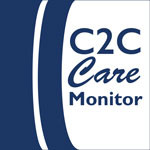Photos, Negatives, and Slides
- This topic has 1 reply, 2 voices, and was last updated 8 years, 5 months ago by
 Miriam Centeno.
Miriam Centeno.
-
AuthorPosts
-
-
October 27, 2015 at 12:44 pm #134181
Haley
ParticipantI’m a museum studies student at GWU and work in the Special Collections at the school library. For the past couple of months I have been processing photos, negatives, and slides. They came to the library in old archival sleeves and have been off-gassing. I have been putting everything in new archival sleeves but I am wondering if there is anything better to put them in to protect them. ? I had interned with a Collections Manager at the National Museum of American History who was not a fan of placing artifacts in plastic sleeves but she did not know what else to do. I would appreciate any advice for protecting photos, negatives, and slides for the long run!
-
October 27, 2015 at 10:45 pm #134184
 Miriam CentenoParticipant
Miriam CentenoParticipantHello Haley,
The choice of enclosure for the rehousing of photos, negatives and slides depends on a variety of factors: the type of material that these items are made of, the current physical condition of these objects themselves and the environmental condition they will live in. As your Collection Manager thinks, not everything should be stored in a plastic sleeve, especially if it is stored in high humidity conditions, where moisture can be trapped in the sleeves. Or sometimes paper envelopes are more appropriate to allow the build-up of acidic gases from the negatives to escape. You also mentioned that some older plastic sleeves off gas, such as those made of polyvinyl chloride (PVC). It is important to determine the make-up of the sleeves to be used because some materials are not stable and will in time degrade and cause further damage to the contents within.
When purchasing these enclosures you will find vendors that currently use the term “archival polyester”, with the tag that it passed PAT test. The Wilhelm Institute recommends the use of “uncoated transparent polyester (e.g., DuPont Mylar D and ICI Melinex 516)… uncoated polypropylene (e.g., Hercules T500 film) and … high-density polyethylene (recommended as the best available low-cost material for amateur photofinishing applications).”1
The Preservation Pamphlets for NEDCC advices: “Three layers of protection are recommended for the storage of film base photographic materials. Negatives should be placed in sleeves, the sleeves placed in a box or drawer, and these boxes or drawers on shelves or in a cabinet. Motion picture film and microfilm should be stored in unsealed containers in cabinets or on shelves.“2
A general rule to follow is to make sure that the enclosure materials you are using have passed the Photographic Activity Test, or PAT. This is a test developed by the Image Permanence Institute (IPI). IPI describes the PAT as “an international standard test (ISO18916) for evaluating photo-storage and display products… this test explores interactions between photographic images and the enclosures in which they are stored. The PAT is routinely used to test papers, adhesives, inks, glass and framing components, sleeving materials, labels, photo albums, scrapbooking supplies and embellishments…” 3
I invite more experts to add their opinions to this topic.Below are some resources:
1. NEDCC Preservation Leaflets –
PHOTOGRAPHS
5.1 A Short Guide to Film Base Photographic Materials: Identification, Care, and Duplication
https://www.nedcc.org/free-resources/preservation-leaflets/5.-photographs/5.1-a-short-guide-to-film-base-photographic-materials-identification,-care,-and-duplication ,last accessed 10/27/20152. Wilhelm Imaging Research -Envelopes and Sleeves for Films and Prints
URL: http://www.wilhelm-research.com/pdf/HW_Book_14_of_20_HiRes_v1c.pdf , last accessed 10/27/20153. Image Permanence Institute, Photographic Activity Test, URL: https://www.imagepermanenceinstitute.org/testing/pat, last accessed 10/27/2015
4. Preserving B&W Negatives from Physical Damage, URL: http://notesonphotographs.org/images/e/e6/Mariana_Planck_for_web.pdf , last accessed 10/27/2015
5. IFLA. CARE, HANDLING, AND STORAGE OF PHOTOGRAPHS, URL: http://www.ifla.org/files/assets/pac/ipi/ipi5.pdf, last accessed 10/27/2015.
-
-
AuthorPosts
- The forum ‘Connecting to Collections Care Forum Archives – 2015 through 2018’ is closed to new topics and replies.




